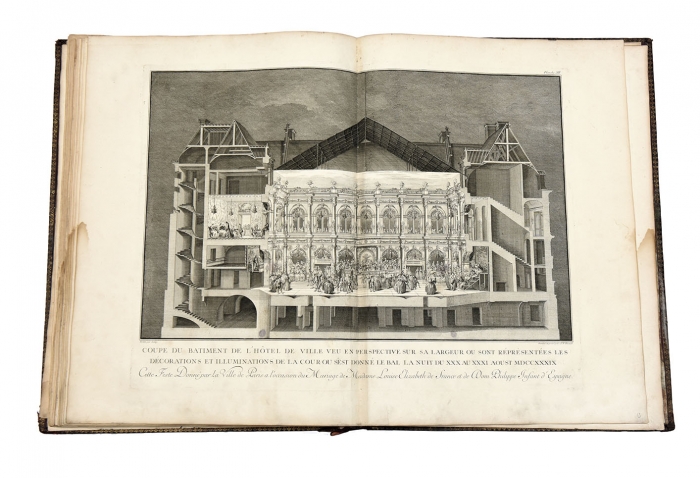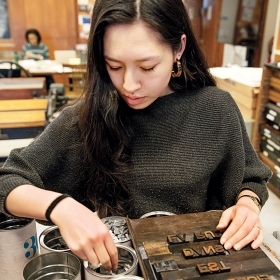Photo by Richard Howard
On a Saturday morning not too long ago, Marie Crowley Sobalvarro ’88 was “shopping” at the TIOLI (Take It or Leave It) section of the transfer station in her hometown, Harvard, Mass., while dropping off her trash. Something large—and old—caught her attention, and she took it home. When Ruth Rogers, curator of Special Collections at Clapp Library, came to look at it after Sobalvarro gave her a call, she immediately knew it was valuable.
It has an armorial binding, which means it was bound for nobility or aristocracy—in this case with the arms of the city of Paris. When Rogers looked inside, she saw that it has a stamp indicating that at one point, it belonged Anatole France, the famous French author. It has thick, handmade rag paper and intricate engravings, and is massive—25 inches high and 37 ½ inches across when open. “This is what’s known as a festival book. It’s an actual documentary piece of evidence of the marriage of Louise Elisabeth of France [eldest daughter of Louis XV] and Dom Philippe, prince and grand admiral of Spain,” Rogers says. “It was common, when there were royal marriages, to issue this type of commemorative book.”
The book details the events of the wedding, which took place on Aug. 29 and 30, 1739, and includes engravings of important events and locations, like the one above, a cutaway view of a ball that took place in the Hôtel de Ville in Paris.
Rogers thinks fewer than 200 copies of the book were printed, and she knows of three copies in other collections, including one housed at Yale. In spite of the fact that the book was found in a transfer station in rural Massachusetts, it is in relatively good shape, she says. However, it is missing one page—which included engravings of fireworks, Rogers says with a sigh of regret.
Rogers imagines that Wellesley classes on the Enlightenment and the history of the French empire would benefit from a trip to Special Collections to see this book, which Sobalvarro donated to Wellesley. “This is certainly a level of society that is often documented in paintings, but to have it documented in a book like this, and to think that this book is one of an edition, you can imagine the expense of producing it,” she says.
Next up, Rogers plans on doing research to figure out how the book made its unlikely journey from the aristocracy to Anatole France to the Harvard transfer station. Certainly it’s one that Louise Elisabeth and Dom Philippe could never have foreseen.







We ask that those who engage in Wellesley magazine's online community act with honesty, integrity, and respect. (Remember the honor code, alums?) We reserve the right to remove comments by impersonators or comments that are not civil and relevant to the subject at hand. By posting here, you are permitting Wellesley magazine to edit and republish your comment in all media. Please remember that all posts are public.